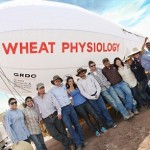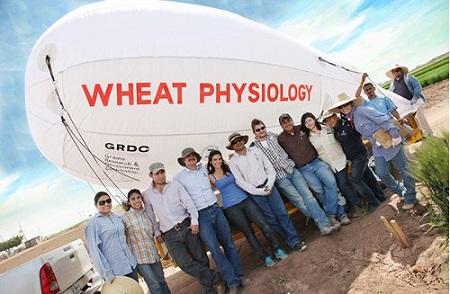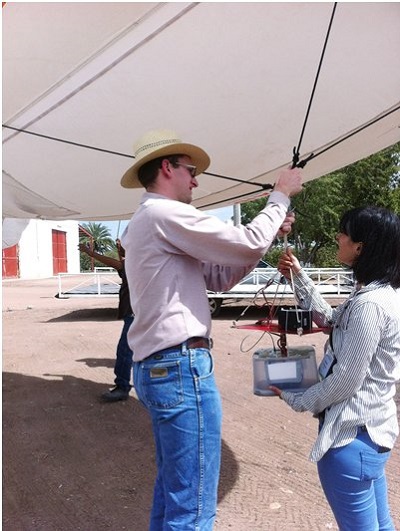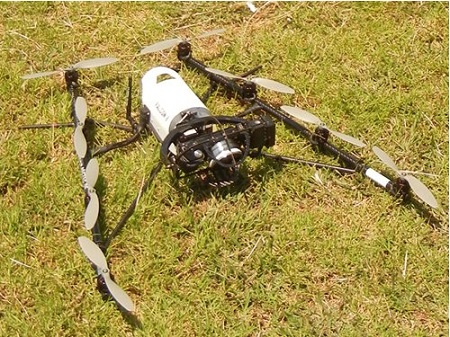Since Maria Tattaris began working at CIMMYT (International Maize and Wheat Improvement Center) two years ago, the blimp used by the wheat physiology group in Ciudad Obregón, Mexico, went from sitting in a box to being a main component of the group’s aerial remote sensing platform.
Tattaris brought her background in mathematics and experience using remote sensing to study forest fires to contribute to this developing field at CIMMYT. Remote sensing allows researchers to obtain information about an area without physical contact. In terms of crops, remote sensing can be used to observe plant characteristics and dynamics over time and is particularly useful when applied to large areas that are inaccessible or may be otherwise difficult to monitor.
A London native, Tattaris didn’t have much experience with crops before coming to CIMMYT. Nonetheless, her position’s focus on research-based field work struck her interest. “It had everything I was looking for,” she said. She went straight to Ciudad Obregón and began research using the helium-filled blimp, which is tethered and floats as high as 70 meters above the fields to help analyze the physiological properties of wheat.
Maria Tattaris and Ph.D. student Jared Crain place a camera on the blimp in Ciudad Obregón, Mexico. Photo: Wheat Physiology Group.
In addition to the blimp, the team uses an unmanned aerial vehicle (UAV). This small, remote controlled helicopter has a thermal camera and multispectral camera attached to it. Images taken by the cameras can identify healthy versus stressed plants, Tattaris said. The resolution of the images can be as high as 4 centimeters – meaning each pixel is 4 meters on the ground – and hundreds of plots can be measured in one take. The airborne remote sensing platform has the potential to be applied as a tool to select the best performing lines.
Images taken by the cameras attached to this unmanned aerial vehicles (UAV) can identify healthy versus stressed plants.
Tattaris spends several months of the year in Ciudad Obregón, where she’s in the field researching as early as 5 a.m. or showing her work to visitors. In El Batán, she focuses on data analysis.
Remote sensing is being used across CIMMYT and was recently the focus of a conference organized in Mexico City. The technology can be used to increase efficiency, allow researchers to screen larger trials and reduce error.
Source: agprofessional.com




